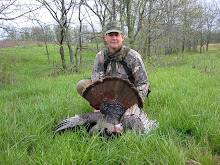I must have jinxed myself with the previous comment about technology. I purchased increased DSL speed and it now drops out every 5 minutes. I guess I won't bore the reader with the detail, lets talk Quail (as long as I stay connected).
Just read over the MU extension bulletin G9421, "Field Borders for Agrinomic, Economic and Wildlife Benefit." It was published November 2008. I don't know any of the authors, but I will read anything Bill White of MDC has to say about Bobwhites.
Nothing really new here, a few good economic examples to try and convince farmers of the potential benefits though it stops short of placing an economic value on increased Quail numbers. For me, that is the value for which I purchased my farm.
Other points I found interesting:
1. Three different grass communities were established along crop fields; fescue, cool season mixture and warm season mixture.
2. There was no difference in the crop yields based on the type of grass. (and heavy weed component).
3. Insect pests did not increase, in fact the European Corn Borer management was "potentially enhanced" along WSG borders due to the increased predator insects found in the WSG.
In the Establishment techniques section the authors recommend 30 foot or more for border width and give a couple of recipes for WSG and forbs mixtures depending on erosion potential. Of interesting note is the mention of a "Natural Field Border" as in not planting grasses! This may be the best section of the paper. It still requires spraying, burning and disking, but the planting is reduced to adding legumes.
I only have a few locations on my farm where crop fields abut forest. The majority of my crop fields lay between wide grassy fingers. These fingers contained some mature trees in small groups but I am slowly turning them into brush piles and firewood. By spaying the fescue in these fingers I've gotten an unbelievable ragweed and native wildflower response. It has been even better following the burns I did in 2008.
I will add a few photos of my own Field Borders below:


The picture on the left is a before and the one on the right is an after. After cutting an moving the locust and hedge trees and after spraying the fescue. Between the far end of the row of downed timber structure and the pile on the horizon is a planting of 75 plum seedlings. For those that don't recognize the brown weeds in the foreground it is common ragweed. I couldn't help but throw in a little patch of milo half way up.

No comments:
Post a Comment